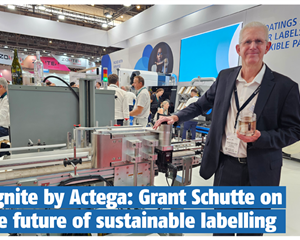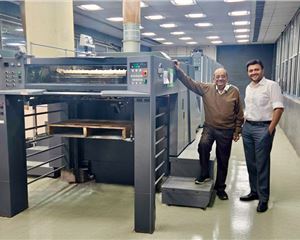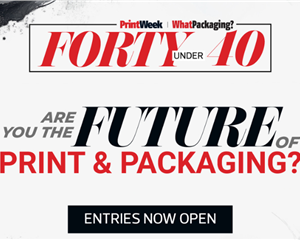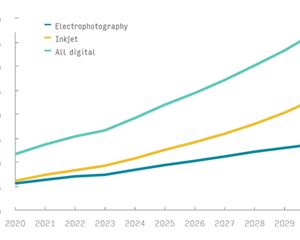Digital Case Study: Kadam Digital Transprints and Print On Demand Services
Two digital print firms have re-invented themselves in creating new offerings. Noel D'cunha and Samir Lukka spend quality time at Kadam Digital Transprints and PODS and find out how
05 Apr 2011 | By Rahul Kumar

Kadam Digital Transprints, Sanjay Kadam
Digital production houses are on the rise in India. Kadam Digital Transprints (KDT) in Pune has joined the digital tribe with the installation of Kodak’s Nexpress SE 3000 five-colour press. With this offering from Kodak, the CTP company located in the heart of Pune (next to the historical Kesari office) will cater to digital photo albums.
Initially established as a pre-press bureau in 1990, Sanjay Kadam, the self-made director at KDT, raised eyebrows when his firm set a fixed price for CTP plates. Kadam stood firm against and refused to buckle to the whims of customers who demanded a discount. This along with an aggressive marketing strategy (Kadam hosted one of the first of its kind CTP seminar at a time the technology was taking its first baby steps in India) turned out to be a success story. Today, other bureaus have followed suit while KDT has ventured into what has now become a mainstream offering, capable of competing with litho – production of photo albums.
Kadam says: "Photo books and wedding albums bring a unique and emotive product to the marketplace. When we started talking to clients in and around Pune – including rural clients in rural Maharashtra – about it, we received a positive reaction."
According to Kadam, the Nexpress which has a fifth colour station can print watermark applications, digital texturing. Furthermore, it can cover 82% of the Pantone colour gamut without a special recipe. "The Nexpress SE 3000 digital press fulfills our needs because of 3D, raised printing and special colours," adds Kadam.
KDT’s contract with Kodak includes 100 copies of Kodak Digital Album Pro (K-DAP) along with the Nexpress. This is a clever move. One: Kadam made the K-DAP software avaliable to photographers, big and small. Two: They could tweak photographs and create their own print-ready designs. But what is K-DAP? It is Kodak’s album designing software, which comes with features like Adobe’s Photoshop integration, auto album creator wizard and PDF/PPT proof files that help professional photographers to design wedding albums, photo books and calendars with ready-to-use design templates.
KDT has a fleet of workstations for K-DAP with designers who are connected to the Nexpress. "A photo album can be created within 10 minutes using K-DAP. It enables the preparation of albums at the customer’s end. Once the album is prepared, he can send it to us in a PDF form, and we deliver it within a period of seven days."
The best part of this arrangement is, KDT sold the K-DAP software to its customers at a minimal cost of Rs 500. It has segregated its digital production floor with a walk-in kiosk where the customers can bring their files and design their own albums.
Apart from this, the in-house design teams ensure customers can explore special applications such as personalisation, variable data printing and transpromo. Furthermore, KDT provides services for short-run applications from colour brochures and inserts to direct mail, on a variety of substrates.
It has created a paper catalogue of 45 different paper substrates after doing the in-house testing on Kodak Nexpress. Apart from the print enhancements on these substrates, the catalogue offers available sizes and the gsm range.
"We are exploring the possibility of digital printing on various substrates. Some of the textured substrates like Japan Leather, Modigliani Natural, Papyrus, Pike Red, Insize Dali Bright White and Copen
Pearl adds a unique artistic look to the final print. The output of print varies on various substrates.
Hence, our paper catalogue is a handy tool which visually presents the outcome on all 45 substrates to our customers," says Kadam. We hope to expand into profitable digital opportunities. There is a resistance to new ideas which we are trying to break down. Our designers are creating applications with boxes and pharma proofing and even book covers."
KDT offers printing of various image sizes: 10x14/ 12x12/12 x15/12x18 /14x14 and 14x18 inches.
In a short time, KDT has created a fully equipped digital bindery to fulfill its finishing needs. It includes machines of industrial production capacity. The range includes machinery for creasing, cutting, perfect binding, casemaking, card cutting, UV coating, joint forming, punch and ribbit, wiro binding, thermal lamination and metal binding.
The future of KDT holds an even more comprehensive portfolio of services than it now provides. It reinforces this belief with a team of committed and encouraged specialists who enjoy what they do.

Print On Demand Services, Sunil Chhugani
There are two factors that are presently a concern over rapid commoditisation of printed products. These are price pressures and shrinking demand from more competition. And there’s only one way to wriggle out of this situation: ability to differentiate except on price.
"The digital printing marketplace has become very competitive. Even then as a matter of policy, we do not sell sheets but only finished products, which has helped us boost our business," says Sunil Chhugani, managing director of the Mumbai-based Print On Demand Services (PODS).
PODS, the creation of Khagesh Patel, a partner in Ahmedabad-based Patel Digitals installed India’s first Kodak Nexpress S3000 at the beginning of 2009 with the aim of catering to short-runs, variable data or on-demand printing needs. It also hoped to expand its reach and open the door to new business and revenue growth through the use of multiple service locations (with press installations) to distribute print jobs across a network of remote locations.
In April, 2010, Chhugani took over the management of PODS. Since then, the firm’s turnover has leaped 2.5 times, and in one shift producing 3,000-5,000 sheets per day.
PODS’ print jobs are commercial-based, 25-30% of which are dimensional printing. "Dimensional printing has helped us to expand our revenue generating opportunities by differentiating the creative piece and capturing the tactile senses in a unique and interesting way," says Chhugani.
The Kodak S3000 series (upgradable) is fitted with both dimensional printing and glossing unit, as part of the fifth imaging unit solution and the dimensional clear ink combines to create 3D raised printing that provides tactile effects.
And unlike the perceived ideas of dimensional printing being expensive, the incremental margins are quite attractive. "It is economical and affordable and the effects are exciting," says Chhugani.
Dimensional printing requires creating special files for the fifth colour. From the designers’ perspective, the effects are to be used at certain points. Use of the fifth colour on a hard or dark background is not advisable. Lighter the background, better the deposition.
Chhugani says: "There’s a general tendency to use more dimensional effect, just because it comes at a significantly lower price. However, overuse spoils the look and feel. The products look beautiful if these limitations are taken care of."
Chhugani is still keen on taking forward the PODS initial vision of using multiple presses to distribute print jobs across a network to remote locations. In which case, he will follow a different business model. He plans to partner with like-minded market leaders and entrepreneurs in new space to create a network of service providers. His approach may be more scalable and prudent.
"Who would not want to," says Chhugani, adding "now that we have a profitable business, our focus for the present is entirely on doubling the firm’s turnover, year on year by utilising the existing NexPress’ optimum capacity of 20,000 sheets per day," says Chhugani. Concurrently, he is exploring options to execute on the original vision of PODS.
Chhugani envisions getting past the technology border – and into the land of the new, for which he says "one needs a futuristic roadmap".












 See All
See All